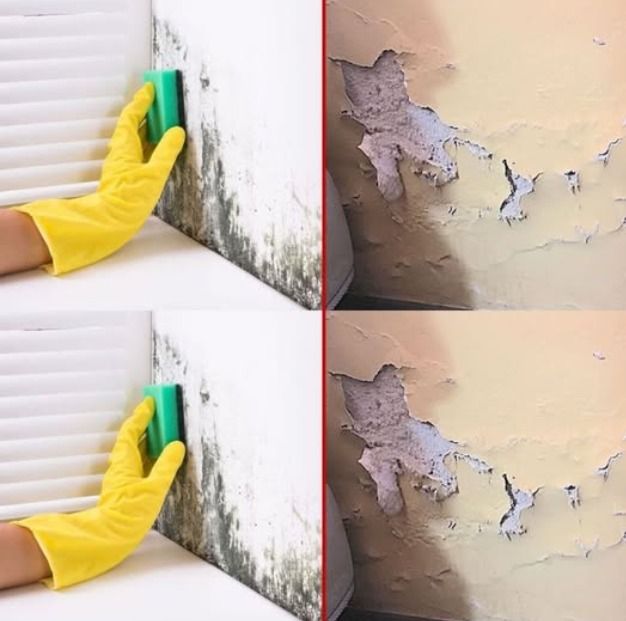Introduction:
Excess humidity in the house can lead to a variety of problems, ranging from unpleasant odors and unsightly mold to structural damage. Moisture can cause wallpaper to peel, ceilings to stain, and even promote the growth of harmful mold, which can adversely affect your health. Fortunately, combating humidity doesn’t have to be complicated or expensive. With a few simple, natural solutions, you can eliminate moisture, prevent mold, and even infuse your home with delightful scents. In this guide, we’ll show you how to fight humidity effectively and create a fresh, welcoming atmosphere in your home.
Why Is Controlling Humidity Important?
- Prevents Mold and Mildew:
Excess humidity provides the perfect breeding ground for mold and mildew. These fungi thrive in damp, moist environments and can cause significant damage to your home’s structure. Moreover, mold spores can trigger allergic reactions, asthma, and respiratory issues. By reducing humidity, you can eliminate the conditions that promote mold growth and prevent these potential hazards.
- Protects Your Home:
Moisture can cause long-term damage to your home’s interiors. Wallpaper peels, ceilings develop stains, and furniture may warp or deteriorate. Humidity can also promote rusting in metal appliances or corroding wooden furniture. Maintaining an optimal humidity level helps protect your home’s structural integrity and prolong the life of your belongings.
- Improves Health:
High humidity levels can lead to a range of health issues, including breathing problems, increased dust mites, and other allergens. A damp environment may also exacerbate conditions like asthma or allergies. By reducing indoor humidity, you improve indoor air quality, which can significantly benefit your respiratory health.
- Enhances Comfort:
High humidity makes the air feel heavy and uncomfortable, often leading to increased sweating and discomfort. By combating moisture, you can create a more pleasant environment in your home, where the air feels fresher and easier to breathe.
The Simple Solution: Baking Soda and Essential Oils
What You’ll Need:
- Baking Soda (A natural moisture absorber)
- Essential Oils (Choose a scent you enjoy, such as lavender, lemon, eucalyptus, or peppermint)
- A Small Open Container or Breathable Bag
Steps:
- Prepare the Mixture:
Start by filling a small container with a generous amount of baking soda. Baking soda is a highly effective moisture absorber, and it helps to neutralize unwanted odors in the process. After adding the baking soda, drop 10-15 drops of your chosen essential oil into the container. Stir well to ensure the oils are evenly distributed.
- Place in Humid Areas:
Place the container in areas prone to high humidity, such as bathrooms, closets, basements, or near windows where condensation tends to build up. Baking soda works by absorbing the moisture in the air, while the essential oils add a fresh and fragrant scent to the room.
For added effectiveness, consider placing multiple containers throughout your home, especially in rooms where humidity levels tend to be higher. You can also use a breathable cloth bag for a more discreet option that blends in with your decor.
- Refresh as Needed:
Baking soda and essential oils should be replaced or refreshed every 2-3 weeks to maintain their effectiveness. Over time, the baking soda will absorb moisture, while the scent from the essential oils will fade, so it’s important to replace them regularly.
Alternative Natural Solutions
If you want to experiment with other natural options to combat indoor moisture, here are some effective alternatives:
1. Salt Dehumidifier:
- How It Works: Salt is a natural moisture absorber. It draws moisture from the air and helps to keep the humidity levels in check.
- How to Use: Place rock salt in a breathable cloth bag or perforated container and place it in humid areas like bathrooms or basements. Salt can absorb moisture for weeks, depending on the size and amount you use.
2. Vinegar Spray for Mold:
- How It Works: White vinegar has antifungal and antibacterial properties that help eliminate mold and mildew, neutralizing unpleasant odors in the process.
- How to Use: Fill a spray bottle with undiluted white vinegar and spray it on moldy surfaces. Let it sit for about an hour, then scrub the area clean. This method helps remove both the visible mold and any spores lingering on the surface.
3. Indoor Plants That Absorb Moisture:
Some indoor plants are natural humidity regulators and can help purify the air while absorbing excess moisture. Common moisture-absorbing plants include:
- Peace Lily: Known for its ability to absorb moisture and improve indoor air quality.
- English Ivy: A low-maintenance plant that can reduce indoor humidity levels.
- Boston Fern: Great for regulating moisture and air purification.
These plants not only help combat excess humidity but also add a touch of greenery and beauty to your home.
Tips to Prevent Excess Humidity
- Ventilate Regularly:
Proper ventilation is key to reducing humidity in your home. Open windows and use exhaust fans, especially in high-moisture areas like kitchens, bathrooms, and laundry rooms. Adequate airflow helps moisture escape and prevents it from building up in the air.
- Use a Dehumidifier:
For areas with persistent humidity issues, such as basements or laundry rooms, consider investing in an electric dehumidifier. These appliances are specifically designed to remove excess moisture from the air and can make a noticeable difference in indoor air quality.
- Fix Leaks:
Water leaks from pipes, roofs, or windows can significantly increase indoor humidity. Regularly check for leaks and seal them as needed to prevent water from entering your home. Leaky pipes are a common source of moisture, so repairing them will go a long way in maintaining a dry and comfortable environment.
- Avoid Drying Clothes Indoors:
Drying clothes indoors, especially in areas that are already humid, can contribute significantly to moisture buildup. If possible, dry your laundry outside or use a clothes dryer with proper venting to prevent extra moisture in the air.
FAQs
Q: How long does baking soda absorb moisture?
A: Baking soda typically remains effective for 2-3 weeks before it needs to be replaced. As it absorbs moisture, it may lose its ability to neutralize odors, so be sure to refresh it regularly.
Q: Can I use any essential oil?
A: Yes, you can use any essential oil that you enjoy. Popular options include lavender for relaxation, lemon for freshness, and eucalyptus for a clean, invigorating scent. The essential oil you choose can also have additional benefits, such as antimicrobial properties.
Q: Is this method effective for large rooms?
A: For larger spaces, it’s recommended to use multiple containers of baking soda or combine this method with a dehumidifier. If you’re dealing with a large area, this will help maintain the desired moisture levels.
Conclusion
Fighting humidity in your home doesn’t have to be an expensive or time-consuming process. With simple, natural solutions like baking soda and essential oils, you can reduce moisture, prevent mold, and create a fresh, welcoming atmosphere. Along with other techniques such as using salt, vinegar, and indoor plants, you can maintain a dry, comfortable, and healthy living space.
Whether you’re battling musty smells in the basement or high humidity in the bathroom, these easy solutions will help you take control of moisture in your home. Start implementing these methods today for a drier, healthier, and more fragrant environment. 🌿✨





